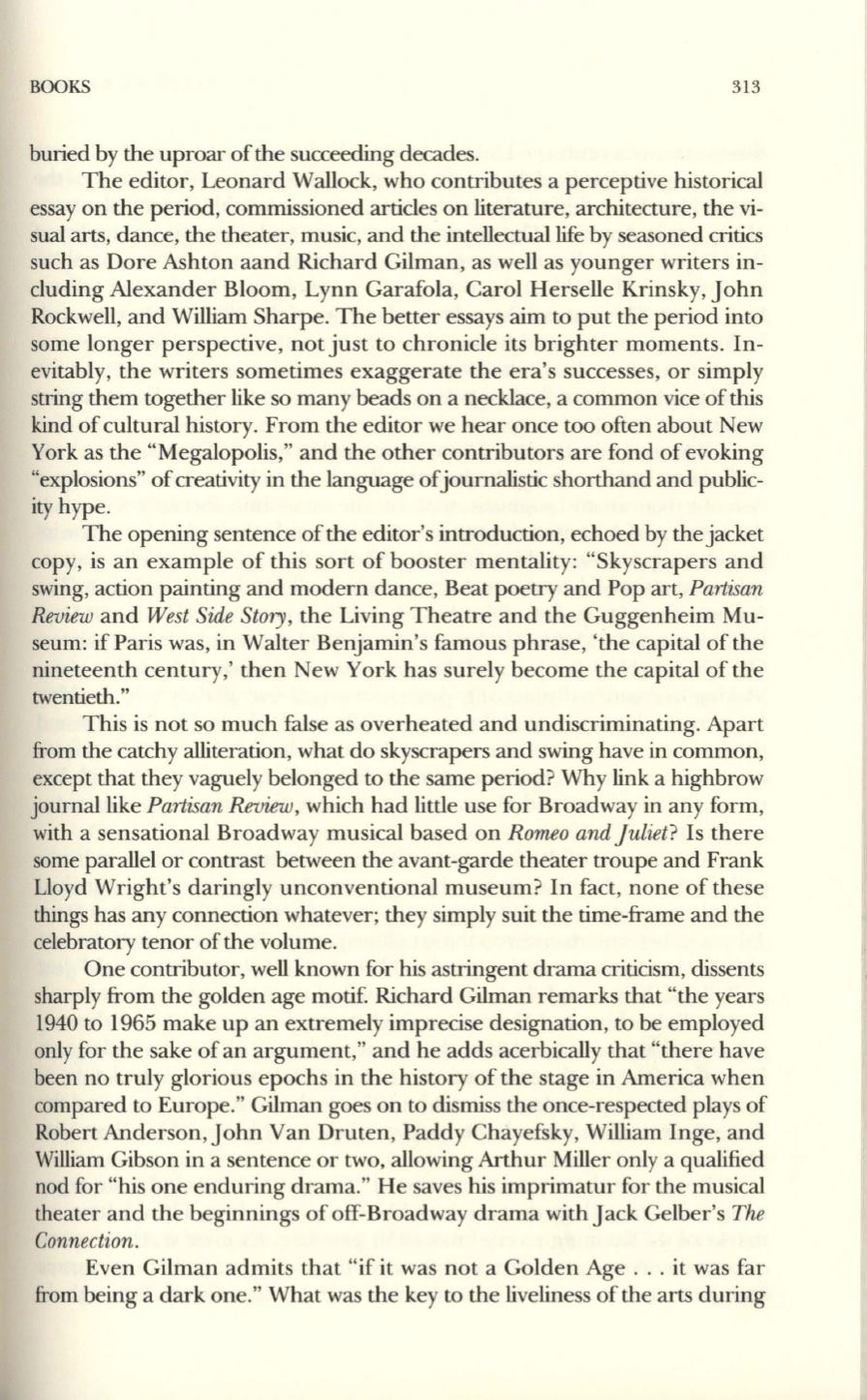
BOOKS
313
buried by the uproar of the succeeding decades.
The editor, Leonard Wallock, who contributes a perceptive historical
essay on the period, commissioned articles on literature, architecture, the vi–
sual arts, dance, the theater, music, and the intellectual life by seasoned critics
such as Dore Ashton aand Richard Gilman, as well as younger writers in–
cluding Alexander Bloom, Lynn Garafola, Carol Herselle Krinsky, John
Rockwell, and William Sharpe. The better essays aim to put the period into
some longer perspective, not just to chronicle its brighter moments. In–
evitably, the writers sometimes exaggerate the era's successes, or simply
string them together like so many beads on a necklace, a common vice of this
kind of cultural history. From the editor we hear once too often about New
York as the "Megalopolis," and the other contributors are fond of evoking
"explosions" ofcreativity in the language ofjournalistic shorthand and public–
ity hype.
The opening sentence of the editor's introduction, echoed by the jacket
copy, is an example of this sort of booster mentality: "Skyscrapers and
swing, action painting and modern dance, Beat poetry and Pop art,
Partisan
Review
and
West Side Story,
the Living Theatre and the Guggenheim Mu–
seum: if Paris was, in Walter Benjamin'S famous phrase, 'the capital of the
nineteenth century,' then New York has surely become the capital of the
twentieth."
This is not so much false as overheated and undiscriminating. Apart
from the catchy alliteration, what do skyscrapers and swing have in common,
except that they vaguely belonged to the same period? Why link a highbrow
journal like
Partisan Review,
which had little use for Broadway in any form,
with a sensational Broadway musical based on
Romeo and juliet?
Is there
some parallel or contrast between the avant-garde theater troupe and Frank
Lloyd Wright's daringly unconventional museum? In fact, none of these
things has any connection whatever; they simply suit the time-frame and the
celebratory tenor of the volume.
One contributor, well known for his astringent drama criticism, dissents
sharply from the golden age motif Richard Gilman remarks that "the years
1940 to 1965 make up an extremely imprecise designation, to be employed
only for the sake of an argument," and he adds acerbically that "there have
been no truly glorious epochs in the history of the stage in America when
compared to Europe." Gilman goes on to dismiss the once-respected plays of
Robert Anderson, John Van Druten, Paddy Chayefsky, William Inge, and
William Gibson in a sentence or two, allowing Arthur Miller only a qualified
nod for "his one enduring drama." He saves his imprimatur for the musical
theater and the beginnings of off-Broadway drama with Jack Gelber's
The
Connection.
Even Gilman admits that "if it was not a Golden Age ... it was far
from being a dark one." What was the key to the liveliness of the arts during


